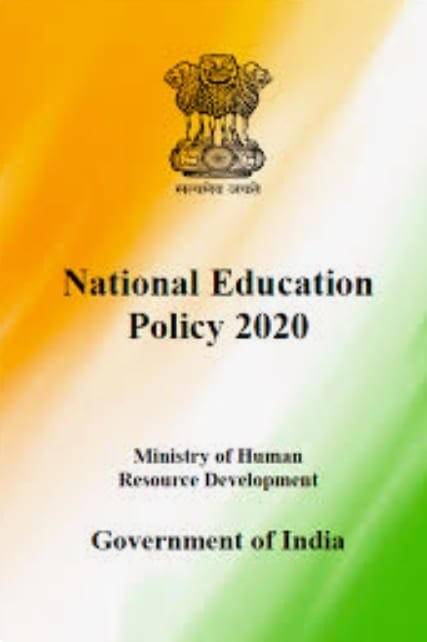Prime Minister’s Educational Vison for the Northeast

Prof K M Baharul Islam
Sri Narendra Modi, the Prime Minister of India, has repeatedly emphasized the importance of education in the development of Northeast India. He has outlined several initiatives aimed at improving the quality of education in the region. The Prime Minister has stressed the need to provide skill development training to the youth in Northeast India. To this end, his government has launched several skill development programs to train young people in various trades and industries. He has also emphasized the need to promote digital education in the Northeast. His government has launched several initiatives to provide access to digital infrastructure, such as laptops and tablets, to students in the region.
Education policies worldwide are increasingly being realigned to the economic prosperity, vertical mobility and social citizenship of the people. Human capital theorists have long underlined the need for investment in building productive human capital in any organisation or a society. Our educational policies developed at the national level are often driven by some overarching goals. Such a top-down approach in implementing those policies on the ground, especially in a specific region like Northeast India, needs a bottom-up restructuring. There is an urgent need to re-examine our education policies at the regional level to provide an environment where individuals can utilise their education and training to gain employment, improve their living standards, and contribute to the social development of the area. The National Education Policy 2020 (NEP 2020) is embarked upon a vision of “transforming the system to meet the needs of 21st Century India.” But are we ready to overhaul our education systems and approaches at the regional level and link our systems to the emerging nature of workplaces that is changing fast (World Development Report, 2019)? If so, what are the major strategic changes we need to undertake immediately to make this geo-strategic Northeastern region a human capital hub in the next few years? In this article, we will examine these issues and the way forward that links education policies to the wider challenges of the region.

Against this backdrop, the Prime Minister has also highlighted the need to improve the quality of higher education in the Northeast. His government has established several new colleges and universities in the region, as well as introduced new scholarship schemes to encourage more students to pursue higher education. In order to promote education for girls in the Northeast his government has launched several initiatives to provide better access to education for girls, including the Beti Bachao Beti Padhao program, which aims to improve the welfare of girls and increase their participation in education.
Considering the region’s specific needs that we should keep in mind to define our policy objectives or strategic plan for the Northeast. The first and foremost is the very minimal presence of industries that makes the region’s youths look for work elsewhere. Our students were dependent on ‘permanent’ government jobs for a long time, but these are now minuscule compared to the large number of ‘educated’ persons. The education systems, especially at the college and university level, are still focused around traditional subject areas granting degrees in specific domains. With virtually no connection to the industry, national or global, the suitability of the domain-specific degrees in gaining employment is the bare minimum beyond giving an entry pass to the competitive job market. Hence, when an average student takes admission in any undergraduate programme, neither the student nor the educational administrators are ready with any plans to fit into a modern workplace in the coming years. The focus is on gaining a degree with knowledge in a specific domain that may be a very idealistic mission, but pragmatics demand that such a linear vision will not materialise if the need to ‘get a job’ in the near future. While keeping in mind that we need highly knowledgeable people and fundamental researchers to develop a subject area, there is also a practical necessity to think about a large number of students who will need some life skills or value-added training during these formative years to gain employment in a very competitive market. Our education policy restructuring for the region should start with this basic understanding.
The National Education Policy (NEP) 2020 is a comprehensive framework for the development of education in India. The NEP 2020 was approved by the Union Cabinet of India in July 2020, and it replaces the previous National Policy on Education which was formulated in 1986 and revised in 1992.The National Education Policy (NEP) 2020 is a policy document that aims to reform the education system in India at all levels, from primary to higher education, with a focus on creating a more holistic and flexible system that can prepare students for the challenges of the 21st century.
The NEP 2020 aims to transform the Indian education system by providing access, equity, quality, affordability, and accountability in education. Here are some of the key highlights of the NEP 2020. Here, through the NEP 2020, the Prime Minister has also stressed the importance of inclusive education that will help the remote communities and small populations living in interior corners of the Northeast region. His vision for education in the Northeast is focused on improving the quality of education, promoting digital education, and providing better access to education for marginalized communities. He believes that education is key to the region’s overall development and prosperity.
A major redefining feature of our educational plans in the region should include ‘integration’ skills in our education system. The region is in the periphery and away from mainland India. Its distinct and diverse set of cultures often adds to isolation in our learners’ mental processes and worldviews. When some of them study in other parts of India or abroad, we see them excel. But these are a fortunate few who could afford to gain such exposure. For those left behind, our education programmes must offer training on acquiring a holistic approach to analyse any given issue from multiple perspectives involving other knowledge domains. Here the NEP 2020 shows us the way as it recommends interdisciplinary structure of programmes. Today, students of Political Science should be able to join courses from computer science to look into social media’s impacts. It will enhance their core learning in political theories and deal with the implications of technology in politics. We will need such professional in the coming days with new jobs in domains like political campaign or social media management. With a combination of statistics courses, the same graduates will be able to gain entry into the world of election result forecasting. Integrative thinking is the need of the hour, and our education policy makers may very well start with themselves in this journey.
The educational institutions in this region can cultivate the civilisational connections between Northeast India and Southeast Asian nations and incorporate relevant educational components based on the shared cultural histories and trade routes. If our campuses in the region can attract more interactions, exchanges, and joint programmes with universities in ASEAN countries, we can expose our students to look for more opportunities. It is high time that our educational programmes and intuitions start building those academic bridges. Narendra Modi has rightly emphasized the need to celebrate the rich cultural diversity of Northeast India. The importance of promoting social inclusion and empowering marginalized communities in the Northeast is at the core of Prime Minister Modi’s vision for Northeast India is focused on promoting economic growth and development, while also celebrating the region’s cultural diversity and promoting social inclusion.
Northeast India has always been a region with immense potential, but unfortunately, it has been plagued by several challenges that have hindered its growth and development. The region has faced issues such as insurgency, inadequate infrastructure, limited connectivity, and underdeveloped industries, among others.However, in recent years, under the leadership of Prime Minister Modi, there have been efforts to address these challenges and bring about change and development in the region. That is heartening message for the people of this region. While there is still a long way to go, these efforts are a step in the right direction towards bringing about change and development in Northeast India. With sustained focus and investment, the region has the potential to emerge as a hub of growth and development, not just in India, but in the entire South Asian region.
—————
Prof Islam is theChairperson, Centre of Excellence in Public Policy, and Government at theIndian Institute of Management Kashipur and a Visiting Professorat London School of Economics.






